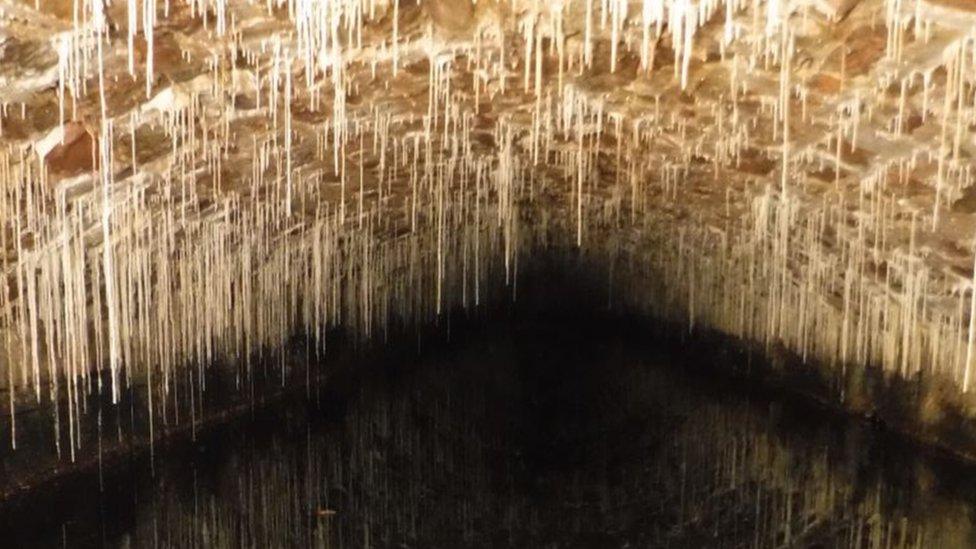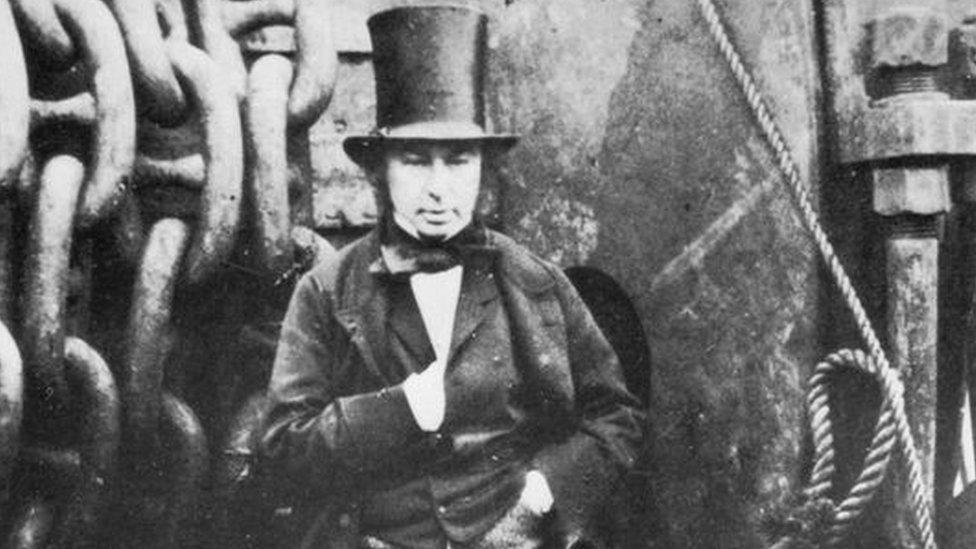Isambard Kingdom Brunel structure halts road scheme
- Published

Archaeological surveys have identified two underground chambers said to be "historically important"
A 19th Century engineering project by Isambard Kingdom Brunel has scuppered a long-awaited road widening scheme.
Funding for the work in Starcoss, Devon, was allocated last month, but work has been suspended with the discovery of a "nationally significant" underground reservoir.
It was part of Brunel's atmospheric railway, which used a vacuum system to move trains.
Structural assessments are under way and archaeologists are being consulted.
Although considered a genius with his work on the Clifton suspension bridge, Great Western Railway and SS Great Britain, the Victorian engineer's atmospheric railway failed.
It moved the trains by extracting air from pipes laid between the rails, using pumping stations along the track.
The pumping stations used water from the underground reservoir to create steam.
The system proved more expensive than using conventional steam-power and operated for less than a year.

Despite his acknowledged engineering genius, Brunel's atmospheric railway was deemed a failure and operated for less than a year
The discovery was made by the Environment Agency, which has been carrying out tidal defence work in the area.
Devon county councillor Alan Connett said: "There have been some significant developments that are likely to prevent any improvement scheme in Starcross.
"Liaison with the Environment Agency has identified a significant constraint, in the form of a vacuum chamber... part of Brunel's atmospheric railway which is nationally significant."
As the chamber lies beneath the area where the road widening was to take place, the council will no longer pursue the scheme said Mr Connett.
The Environment Agency confirmed work had been suspended due to the "historically important" discovery, with archaeological surveys identifying two chambers, 32m (105ft) in length joined by 10 underground arches.
"The project team are currently liaising with archaeologists and completing structural assessments to determine the next steps," the agency said.
The "potentially unstable" chamber has been fenced off and the entrance locked.
"It seems Brunel may have the last laugh on modern day planners and developers," Mr Connett said.
"Highways experts will have to go back to the drawing board."